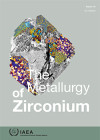The development and usage of new complex materials with improved properties and functionalities are key requirements to provide solutions to major modern engineering challenges. Neutrons, provided by research reactors or spallation neutron sources, constitute in some cases a unique probe to study materials.
Materials research
The understanding of materials is crucial to find solutions to a whole array of new sociological and technological demands in such areas as health, energy, national security and the environment. This in turn requires the mastering of different experimental and computational techniques to unravel and optimize the materials' properties.
Neutron beam techniques are well established and have become key techniques for the detailed characterization of atomic and magnetic structures and dynamics for many important new classes of materials and their processing. This has significantly improved the understanding in such areas as condensed matter physics and chemistry, nanotechnology, polymer science, life science, sustainable energy research, sensors and smart materials, biotechnology, engineering and archaeology.
There are two interactions of neutrons with matter that make neutron scattering a unique probe for materials research: short-range strong nuclear interactions and electromagnetic interactions due to the magnetic moment of neutrons. Since neutrons have no net electric charge, they can penetrate the bulk of materials, making metallic objects largely transparent to the neutrons' transmission.
Among many other engineering functions, thermal neutrons also play a crucial role in locating light atoms, such as hydrogen and oxygen atoms, in intricate structures, resolving the arrangements of magnetic moments in complex magnetic systems and assessing residual stress distribution in mechanical components. Typical media for this application include hydrogen storage materials, electrolytes and battery materials, as well as magnetic films. The effect of isotopic substitution is exploited to identify the precise location of hydrogen atoms, for example in polymers or biological molecules.








